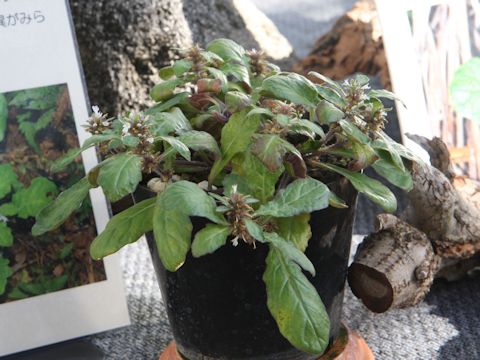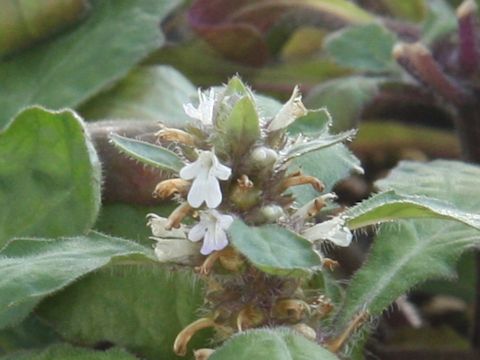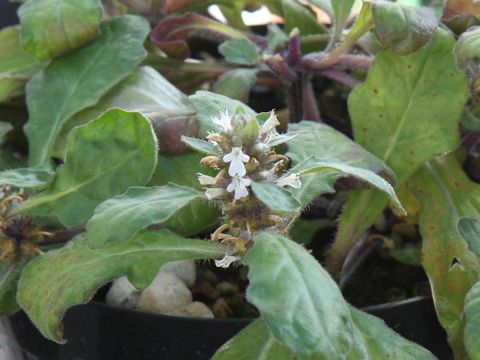|
|
|
|
[Index]
[Back] |
   |
|
|
|
íªÌªdRñ©çäpAìAtBsɪzµÄ¢Ü·Bú½èÌÇ¢Ñâ¹[ɶ¦A³ÍT`PTZ`ÉÈèÜ·BtÍζµA|ó·È~`©ç|âj`ÅAt¿ÆÉÍgó̪ èÜ·BQ©çT²ëAtãüÌÔÉP©çÂÌWgFܽÍââFÌÔð穹ܷBäpØêÅÍuäàsØvÆÄÎêÜ·B |
|
|
V\ÈL\E®Ì½NÅAw¼Í Ajuga taiwanensisBp¼Í èܹñB |
|
|
The "Yaeyama-Juni-hitoe" (Ajuga taiwanensis) belongs to Lamiaceae (the Mint family). It is a perennial herb that is native from the Yaeyama Islands in Japan to Taiwan, southern China and the Philippines. This herb grows in sunny forest edges and roadsides, and reaching 5-15 cm in height. The leaves are opposite, obovate-oblong to oblanceolate, with petioles and wavy toothed edges. The one to several, pale pink or whitish flowers bloom in axillary clusters from February to May. In Taiwanese Chinese, it is called "äàsØ". |
|
|
ïé§ÂÎsuÂÎÀ±A¨vÉÄA2013N0119úBeB |
|
|
|
Shu Suehiro |